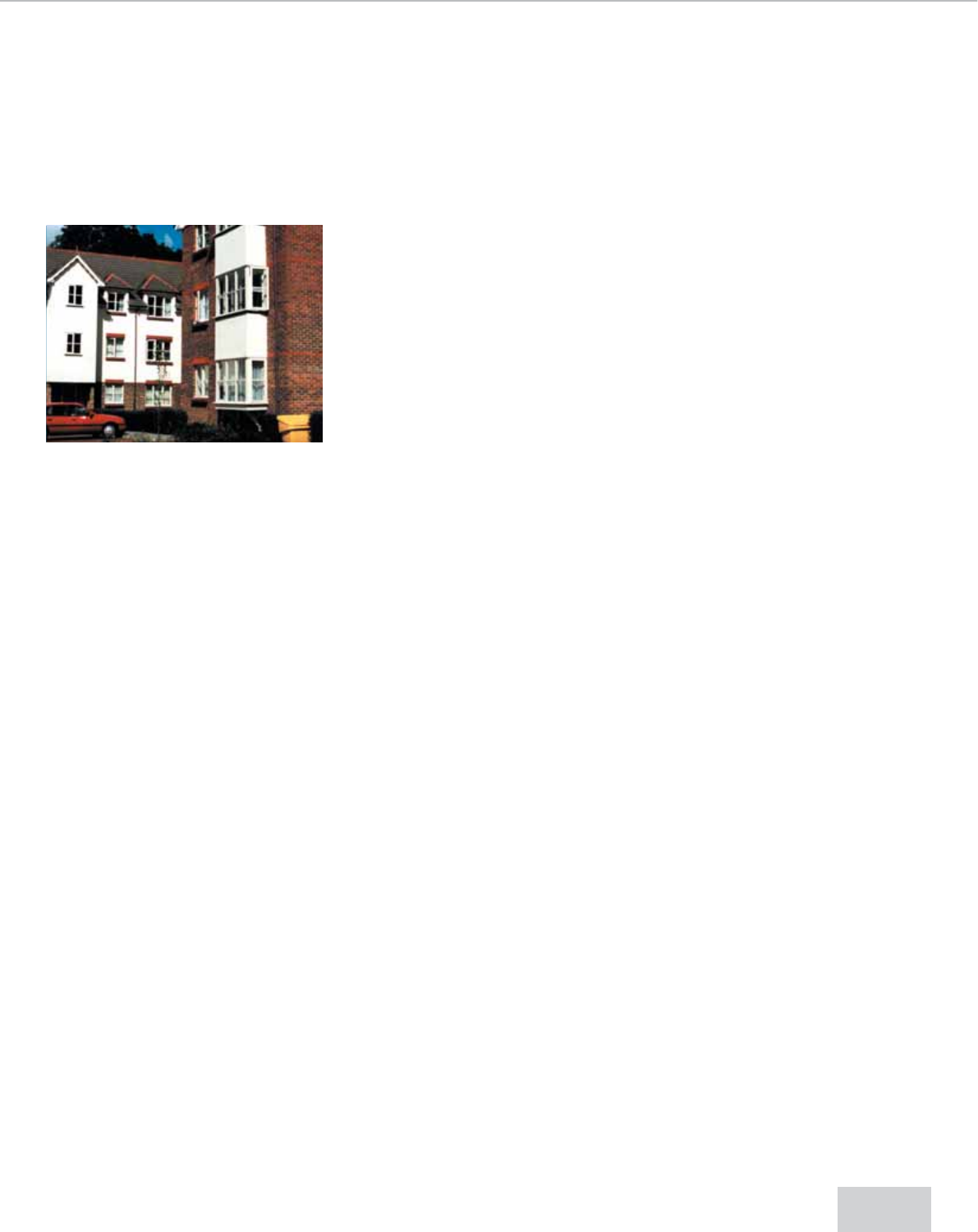
and principal living room (smoke
detectors are an acceptable alternative
in the living room).
Existing Properties
Single storey - owner occupied
Grade F, Category LD3
Grade E should be installed if there is
doubt regarding the ability of the
occupier to replace batteries, or Grade
D if the reliability of the mains power
supply is suspect.
Single storey - rented
Grade F, Category LD3
The battery should have an expected
life in excess of 5 years and should only
be accessible by means of a special
tool. Grade E should be installed if there
is doubt regarding the ability of the
occupier to replace batteries, or Grade
D if the reliability of the mains power
supply is suspect.
2 or 3 storey house or maisonette -
owner occupied
Grade F, Category LD3
Grade E should be installed if there is
doubt regarding the ability of the
occupier to replace batteries, or Grade
D if the reliability of the mains power
supply is also suspect.
2 or 3 storey house or maisonette -
rented Grade D, Category LD3
Category LD2 if a risk assessment
justifies additional alarms.
Houses in Multiple
Occupation
Up to 2 storey - New Build
Grade D, Category LD2
Smoke alarms should be installed in
circulation spaces, heat alarms in
kitchen and principal living room (smoke
alarms are an acceptable alternative in
the living room).
Up to 2 storey - Existing property
Grade D, Category LD3
Category LD2 if a risk assessment justifies
additional alarms.
All other types
Grade D, Category LD3 in individual
dwelllings. Grade A, Category LD2 in
communal areas.
Where fire precautions are subject to
legislative control, the enforcing authority
should be consulted before a decision on
the appropriate Grade and Category of
system is reached.
13
SELECTING THE RIGHT
SYSTEM
How do you choose which grade of
system to install? The Code states that
the grade of system that should be
installed depends “on the nature of the
dwelling, the level of the fire risk and the
characteristics of the occupants.”
It points out that Grade F systems
(battery alarms) are the least reliable
and the system used in new dwellings
should be Grade D (mains powered
with integral back-up supply) or higher.
Existing owner occupied dwellings can
be covered by a Grade F system
provided:
• The fire risk is not high
• There is a reasonable certainty that
batteries will be replaced within a
short time, that is, no more than five
days after a low battery signal
If these criteria cannot be met, a Grade
E or higher system should be installed.
Existing tenanted dwellings of two or
more storeys should have Grade D
systems installed.
From a landlord’s point of view, the case
for a Grade D system (mains with stand-
by) seems to be quite obvious. Can
they be ‘reasonably certain’ that a
tenant will replace smoke alarm
batteries within five days? Do they have
‘absolutely no worries about their
tenants paying their electricity bills’?
The Code is asking for that level of
assurance.
Once you have decided what Grade of
system to use, you then need to ask
yourself just how comprehensive the
system needs to be, and this is what
governs the LD ‘Category’ system.
All dwellings should be covered to at least
an LD3 standard, with the decision being
based primarily on fire risk.
If there is a high risk to occupants from
fire in any part of the building, Category
LD1 or LD2 protection level should be
considered. Those who are infirm or
elderly might particularly benefit from a
higher level of coverage. If people are
likely to be in a room where a fire may
break out, this level of coverage is also
recommended.
The Code acknowledges that in
situations where a large number of
properties are involved i.e. the housing
stock of a Local Authority, it is perhaps
not practical to undertake a Fire Risk
Assessment on every one of these
properties. To take account of this a
table listing the ‘Minimum Grade and
Category of fire detection and fire
alarm system for protection of life in
typical dwellings’ – often referred to as
‘Prescriptive Advice’ - is provided. At first
sight this appears to be an easy method
of deciding on the appropriate system
to use in any specific property type.
However, care should be exercised in
applying these recommendations as in
many cases there are notes qualifying
them; this is particularly relevant to
those given for existing properties. If the
notes are overlooked, there is a risk of
applying an incorrect assessment to the
property and as a result specifying what
may be interpreted as an inadequate
system. In view of this, it may be worth
considering applying the ‘New Build’
recommendations to existing properties
to minimise this risk.
PRESCRIPTIVE ADVICE
SUMMARY
New Build
Up to 3 storey - owner occupied or rented
Grade D, Category LD2
Smoke alarms should be installed in
circulation spaces, heat alarms in kitchen
and principal living room (smoke alarms are
an acceptable alternative in the living
room).
Over 3 storey - owner occupied or rented
Grade B, Category LD2
Smoke detectors should be installed in
circulation spaces, heat detectors in kitchen


















